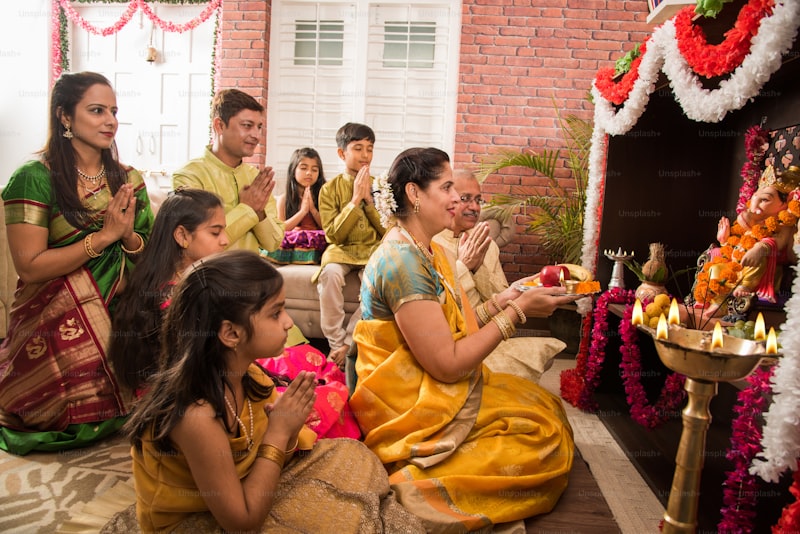Diverse Wedding Traditions: A Celebration of Love Across Cultures
Weddings are a beautiful expression of love, culture, and tradition. Across the globe, each culture brings its own unique set of customs and rituals that characterize the marriage ceremony. In this article, we will explore Diverse Wedding Traditions from various parts of the world, highlighting the significance behind these practices and their evolution over time.
The Importance of Wedding Traditions
Wedding traditions serve as a reflection of a couple's beliefs, values, and heritage. They often encompass the essence of family, community, and shared history. Understanding these customs not only enriches the wedding experience but also fosters a sense of unity and respect for cultural diversity. Below, we delve into a variety of wedding traditions around the world, illuminating the beauty found in diversity.
Indian Weddings: A Vibrant Extravaganza
Indian weddings are known for their elaborate ceremonies and colorful festivities. These weddings can last several days and include a plethora of rituals. One notable custom is the Sangeet, a night of music and dance where family and friends celebrate the upcoming nuptials. Additionally, the Mehendi ceremony features intricate henna designs applied to the bride's hands and feet, symbolizing joy and beauty.
| Key Indian Wedding Traditions |
| Sangeet: Musical Celebration Night |
| Mehendi: Henna Application Ceremony |
| Baraat: Groom's Procession to the Wedding Venue |
| Vidaai: Emotional Farewell from Bride's Family |
Japanese Weddings: A Blend of Shinto and Modern Influences
Japanese weddings often incorporate traditional Shinto rituals alongside modern elements. One of the most poignant moments is the San-san-kudo ceremony, where the bride and groom take three sips each from three cups of sake, symbolizing their union and the binding of their families. The attire varies, with the bride sometimes donning a Shiromuku, a pure white kimono which symbolizes purity and the beginning of a new life.
Mexican Weddings: A Colorful Fusion of Traditions
Mexican weddings are vibrant and filled with life, often incorporating indigenous customs along with Catholic traditions. A common feature is the Lazos, or wedding lasso, where a rope or cord is placed in a figure-eight shape around the couple, symbolizing their unity and binding love. The Mariachi music during the celebration adds to the festive atmosphere, making the event memorable and joyous.
Arab Weddings: Celebrating with Grandeur
Arab weddings are characterized by their lavish celebrations and strong familial bonds. During the Zaffa, a traditional wedding march, the couple is escorted to the reception with dancers and musicians leading the way. The bride often chooses a spectacular gown, and the celebrations can include a variety of dishes served during the feast to honor the guests and celebrate the union.

Exploring Unique Wedding Practices
While many cultures have well-known rituals, others possess unique practices that might surprise you. For instance, in the Maasai culture of Kenya and Tanzania, the bride’s family will throw the bride’s belongings on the ground as a way of symbolizing her departure from her family home. Similarly, in a traditional Scottish wedding, the groom may wear a kilt, reflecting his heritage and family clan.
Australian Weddings: A Mix of Cultures
Australia is known for its multicultural society, which is beautifully reflected in its wedding traditions. Many couples choose to incorporate elements from both the bride and groom’s backgrounds. One popular trend is the Beach Wedding, which allows couples to embrace Australia’s stunning coastal landscape. The incorporation of local flora and fauna into wedding decorations is also common, showcasing the natural beauty of the country.
Chinese Weddings: The Significance of Red
In Chinese culture, red symbolizes good luck and prosperity. As such, brides often wear red dresses, known as Qipao, during their wedding ceremonies. A traditional Chinese wedding also includes a tea ceremony where the couple serves tea to their parents, demonstrating their respect and gratitude. The loud sounds of firecrackers are used to ward off evil spirits, making it a lively and festive occasion.
Common Questions about Diverse Wedding Traditions
When exploring diverse wedding traditions, couples and individuals may have various questions. Here are a few common questions and succinct answers:
- What are some popular wedding customs around the world? Popular customs include the wedding lasso in Mexican weddings, the San-san-kudo in Japanese weddings, and the Mehendi ceremony in Indian weddings.
- How can one incorporate diverse wedding traditions into their ceremony? Couples can personalize their wedding ceremony by selecting elements from various cultures that resonate with their beliefs and values, creating a unique fusion of traditions.
- What is the significance of rituals in wedding ceremonies? Rituals often symbolize unity, respect for family, and cultural heritage, fostering a memorable experience for the couple and their loved ones.
Conclusion: Celebrating Love and Diversity
In conclusion, Diverse Wedding Traditions offer a profound insight into the unity and celebration of love across cultures. Each custom serves as a reminder of how love transcends boundaries and brings people together. As we continue to embrace and respect these diverse traditions, it is essential to consider the cultural significance behind them. For couples planning their weddings, exploring these unique traditions can enrich their experience and celebrate their love story uniquely and memorably. Remember, incorporating elements from various cultures can foster a deeper appreciation for diversity while creating lasting memories for yourself and your guests.
As you embark on this incredible journey of love and commitment, consider the myriad ways to honor your heritage and embrace the richness of wedding traditions from around the world. Happy planning!